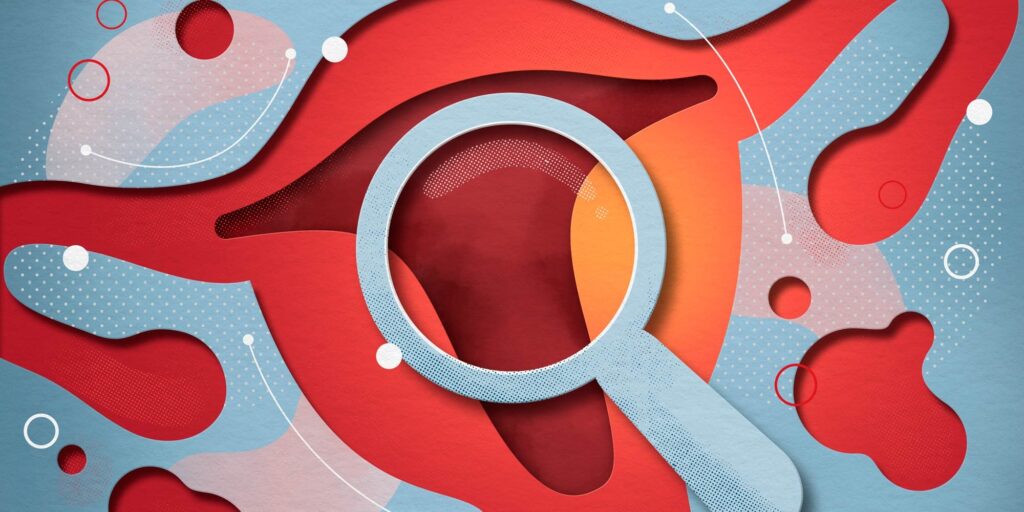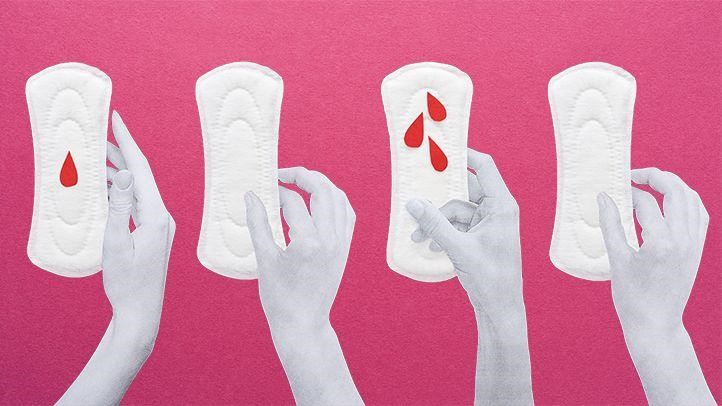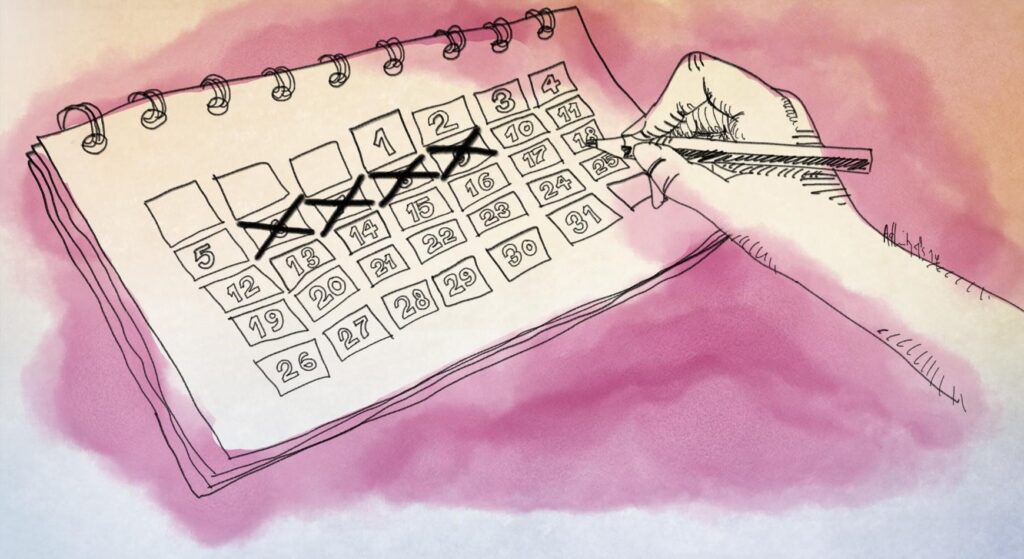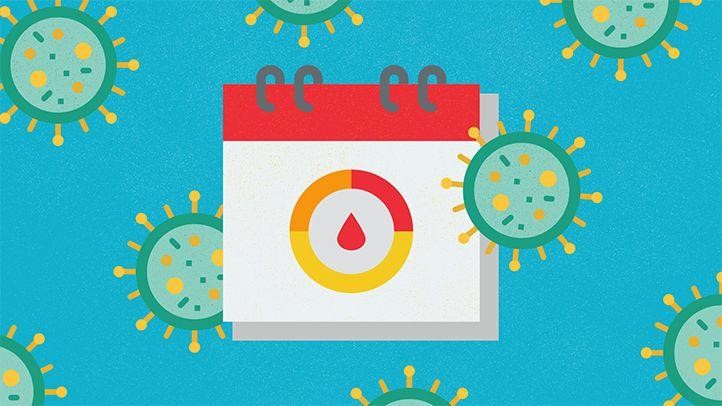5 Conditions That Mess With Menstruation
Probing into the concept of menstruation, it has always been looked upon negatively. Stemming from cultural beliefs about bodily fluids and processes, it has been taboo. Thus resulting in stigmatization and further affecting menstruators’ health and well-being. The lack of awareness around different menstrual disorders has led to many issues. From negative body image, reproductive shame to ignorance of knowledge around different disorders – it has led many menstruators to serious health issues that may need medical or psychological help.
Here’s demystifying the five most common menstrual disorders:
1) Menorrhagia
Mayoclinic defines menorrhagia as a medical term for extremely heavy menstrual periods. It is abnormally heavy or prolonged bleeding. These usually last more than 7 days with heavy bleeding resulting in a change of tampon or pad every two hours. Research says that about 1 in every 20 menstruators have menorrhagia. Yet, symptoms differ for each menstruator. The most common symptoms include anemia, such as tiredness, fatigue to restricting daily activities due to heavy menstrual flow.

2) Oligomenorrhea
Oligomenorrhea is a condition in which one goes through irregular periods. When one goes through periods that usually occur every 21 to 35 days, it is considered normal. The concern arises when one doesn’t go through menstruation more than 35 days may be diagnosed with oligomenorrhea. Often menstruators with these disorders are seen to have nine periods a year as compared to a regular cycle of 12. Although light periods or missing a period with menstruators who suffer from Polycystic Ovarian Disease (PCOD) is common, they differ in severity. Doctors say individuals with these disorders tend to bleed dark brown, red, or light pink. Each cycle differs for each menstruator.
Henceforth, what can be a ‘normal cycle’ for one would not apply the same to the rest. Eating disorders like anorexia nervosa have a severe effect. Their experience is almost light or stops having menstrual cycles due to being underweight. Athletes who have intensive workout schedules are also commonly seen to experience it.

3) Amenorrhea
In simple terms, amenorrhea is defined as the absence of menstruation. It is classified into two types, primary and secondary amenorrhea. Primary amenorrhea is the absence of menarche in girls aged 16 years or older. Menarche is the first menstruation period. It occurs after the development of secondary sexual characters. Secondary amenorrhea is the absence of menses for 6 months. This can occur in women with irregular cycles or 3 months with regular cycles. Apart from not experiencing periods, symptoms include hair loss, milky discharge from the nipples, and facial hair growth. There have been conflicting ideas for many individuals in the transgender community. Scientific research has only focused on biological concerns.
From one’s central nervous system to hormonal issues making it tough to look beyond the binary. The scientific approach of understanding rational ‘underlying causes’ has ignored or ruled out the possibility of these disorders in young trans persons making it tough to get the right treatment. Lack of education around genders and different menstrual disorders has put many at-risk and forced into incorrect treatment.

4) Premenstrual Dysphoric Disorder (PMDD)
Premenstrual syndrome (PMS) is a common wide known syndrome. It has a variety of signs and symptoms which also include emotional changes. Research says that as many as 3 of every 4 menstruating women have experienced mood swings, fatigue, tender breasts, irritability, and some cases of depression.
But a small number of women with premenstrual syndrome have disabling symptoms every month. Though these are commonly experienced, if not managed with a balance in lifestyle can hurt daily activities. This form of PMS is known as Premenstrual Dysphoric Disorder (PMDD). Causes for PMDD are not definite but are a result of either hormonal changes or low levels of serotonin in the brain. Serotonin is a chemical in the brain that is responsible for controlling mood, sleep, and pain. However, these are some signs menstruators experience very often that differ with severity. The stigma around disorders like PMDD makes it tough to diagnose them. These symptoms start around 7-10 days before one getting their period and shortly go away as they start bleeding back.

5) Dysmenorrhea
Although most menstruators experience mild painful cramps, about 10% of them experience severe pain and cramping during their periods. Dysmenorrhea is classified into two types, primary and secondary. Primary dysmenorrhea is observed in the late 20s where the pain is persistent and severe. Secondary dysmenorrhea is observed as an underlying cause of the reproductive disorder. In this condition, the pain gets worse over time. However, common painful cramps are to most menstruators. These cramps can last up to three days with the same
severity consistently. They are treatable but are equally important to get them checked. Some causes for painful cramps can also be a result of non-cancerous growth called uterine fibroids, endometriosis. Additionally, sexually transmitted bacteria can cause pelvic inflammatory disease.

Conclusion
In a conversation about menstrual disorders with a Gynecologist, Dr. Vasanthi. She said, “Amidst the pandemic, there has been an increase in menstrual disorders. Young menstruators are presenting with irregular periods like amenorrhea. There are older menstruators with perimenopausal stages presenting with heavy periods like menorrhagia. The limited movement and poor eating habits have an adverse effect on menstruators. Even those with regular cycles are now facing irregularity. Another important point for irregularity is stress. Often the causes are a combination that results differently in each menstruator. The diagnosis of these varies from person to person. Most of the time, menstruators only visit when things have crossed 6 months.”
There is a gaping lack of information about menstrual issues and seeking help. Rural menstruators have a more need to be educated than the urban menstruators. Educating about menstrual issues will help improve their health-seeking behavior about menstrual abnormalities. Menstruation has not only been a medical but a social problem for menstruators for decades now. Amidst all the social issues, non-binary menstruators have been observed to suffer severely in India. The stigma associated with them has made it inaccessible to basic information and support.
Dr. Vasanthi added, “There is a lack of awareness in both rural and urban areas about this. Both the areas of menstruators come with concerns of infertility rather than menstrual health. The awareness of what is normal for each menstruator and what are the warning signs are a bigger issue. There is so much stigma around disorders being incurable that it has stopped a lot of them from seeking help.
Graphic design by: Avni Gupta
Author


1 thought on “5 Conditions That Mess With Menstruation”
Pingback: What Does My Menstrual Cycle Have To Do With Being pregnant? - Haps News